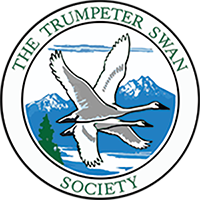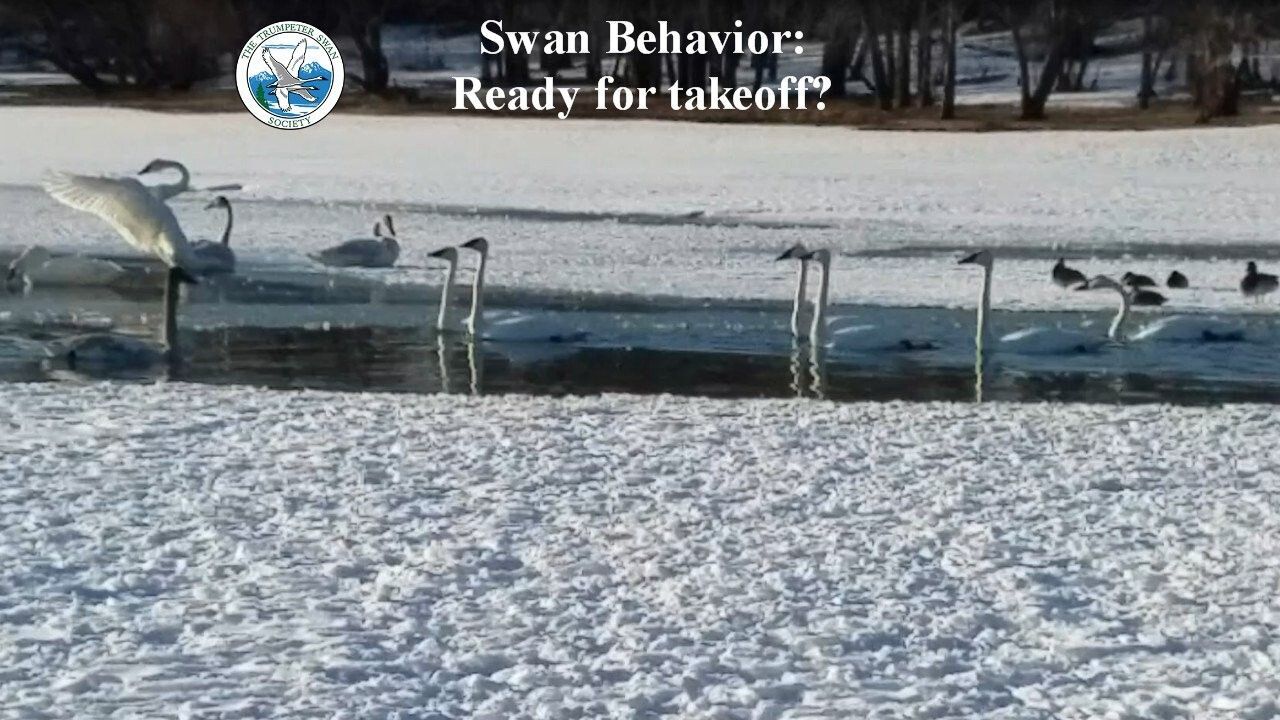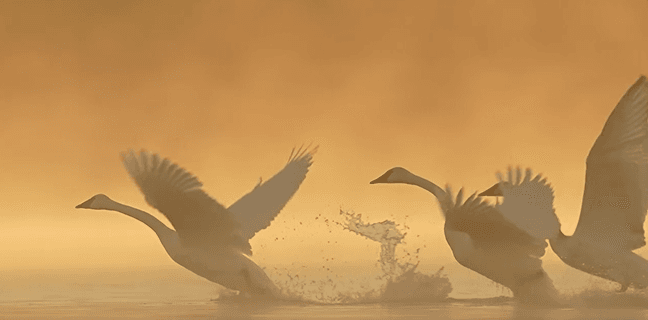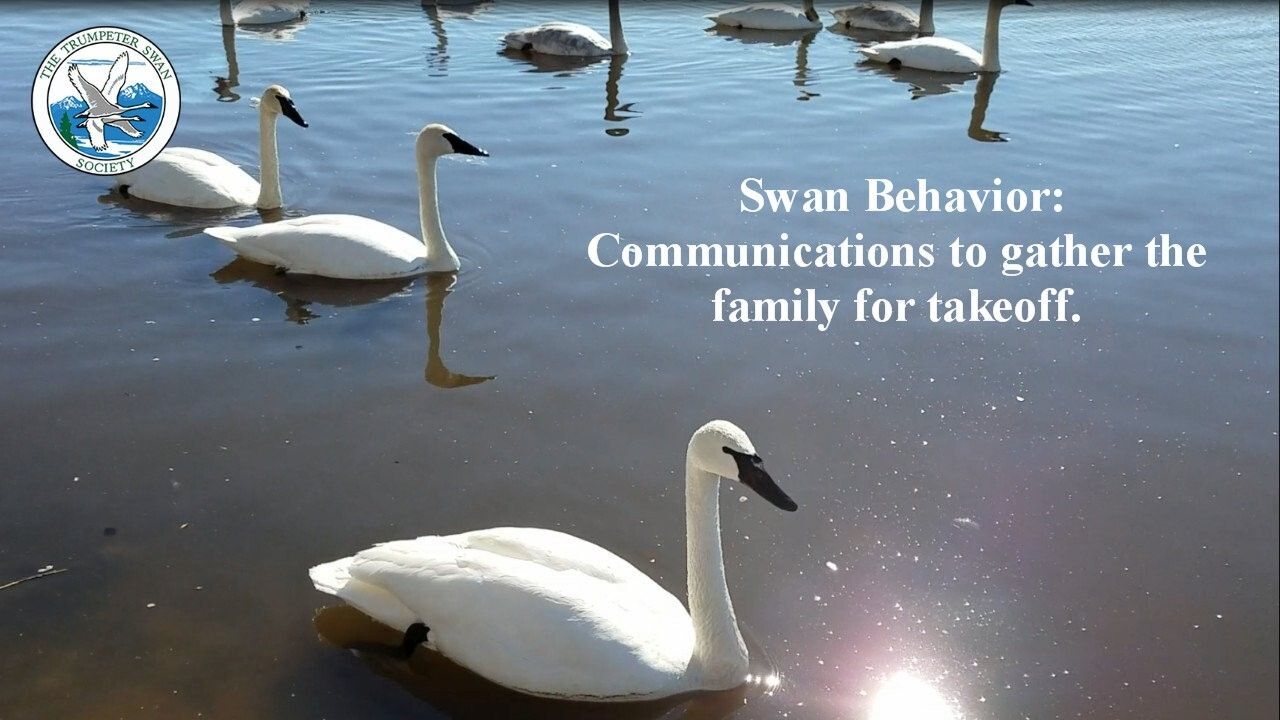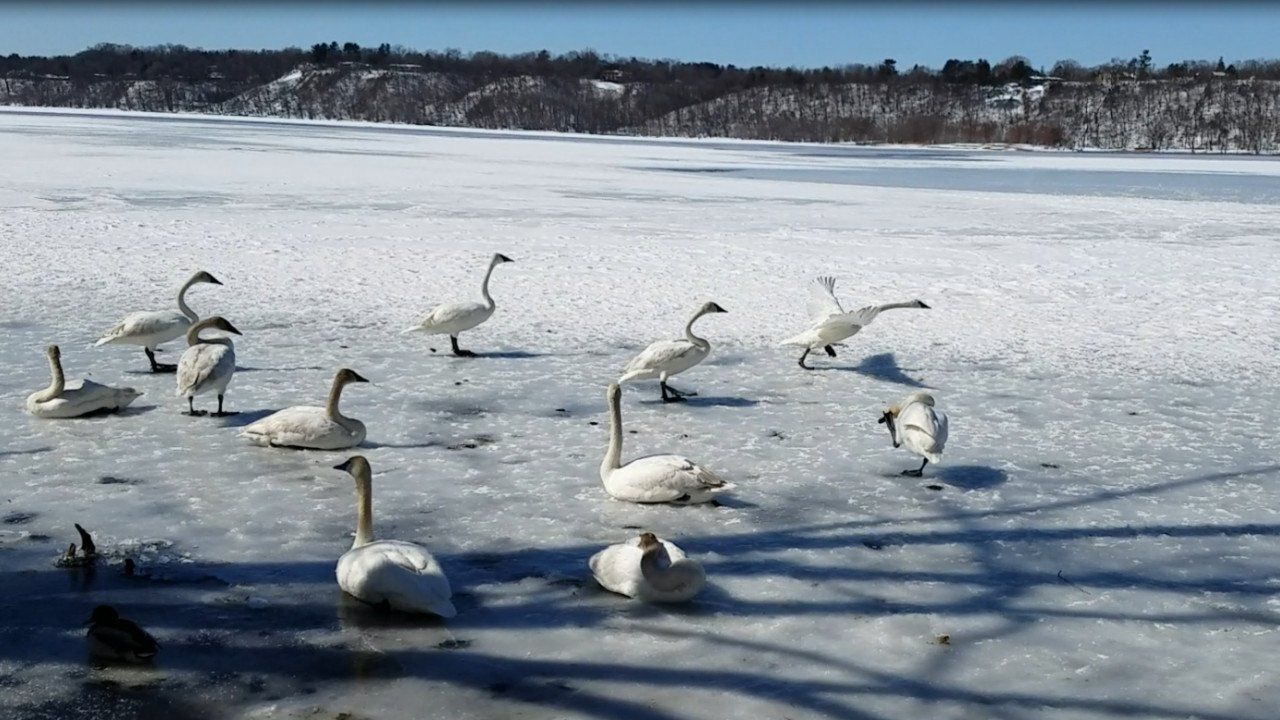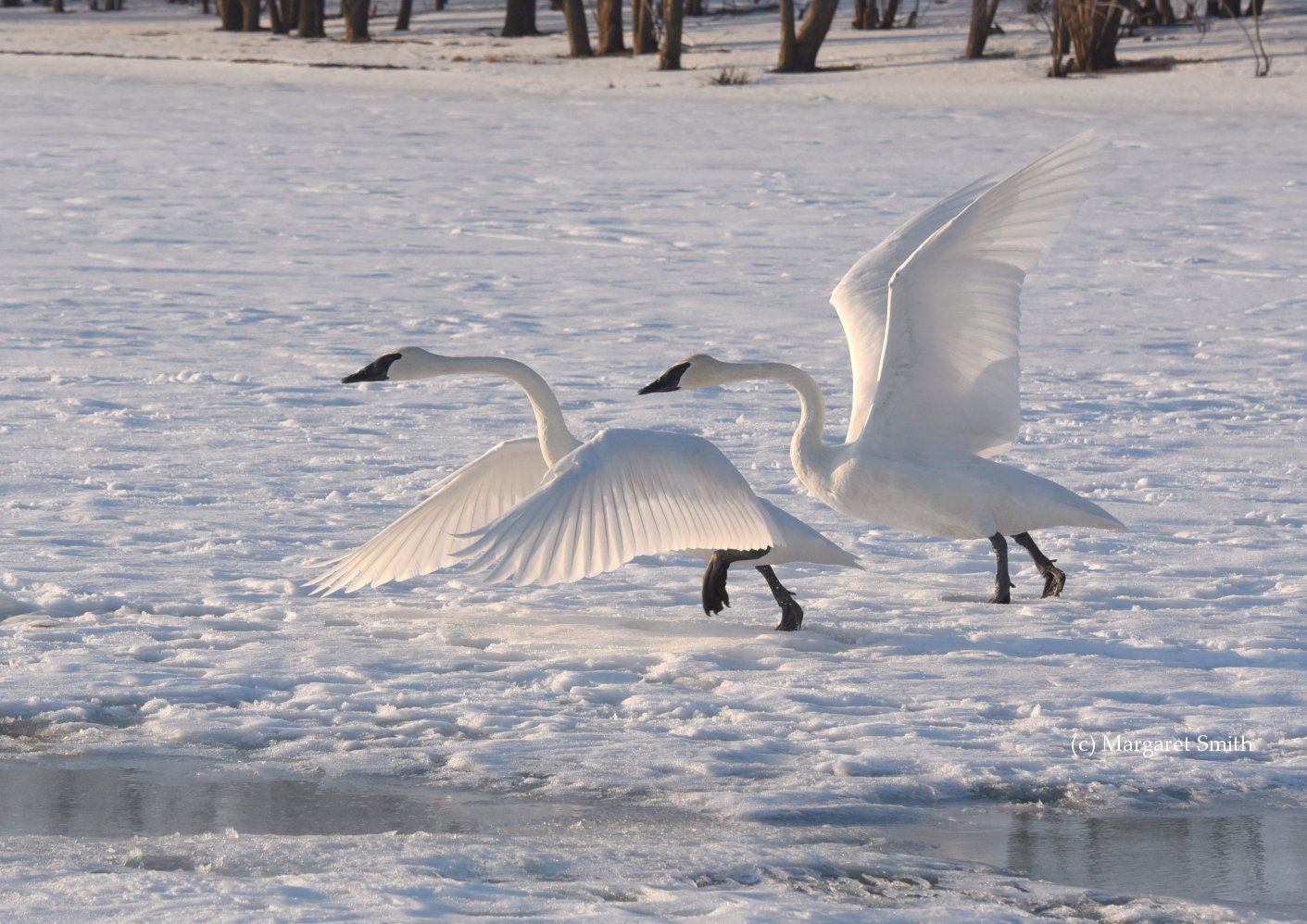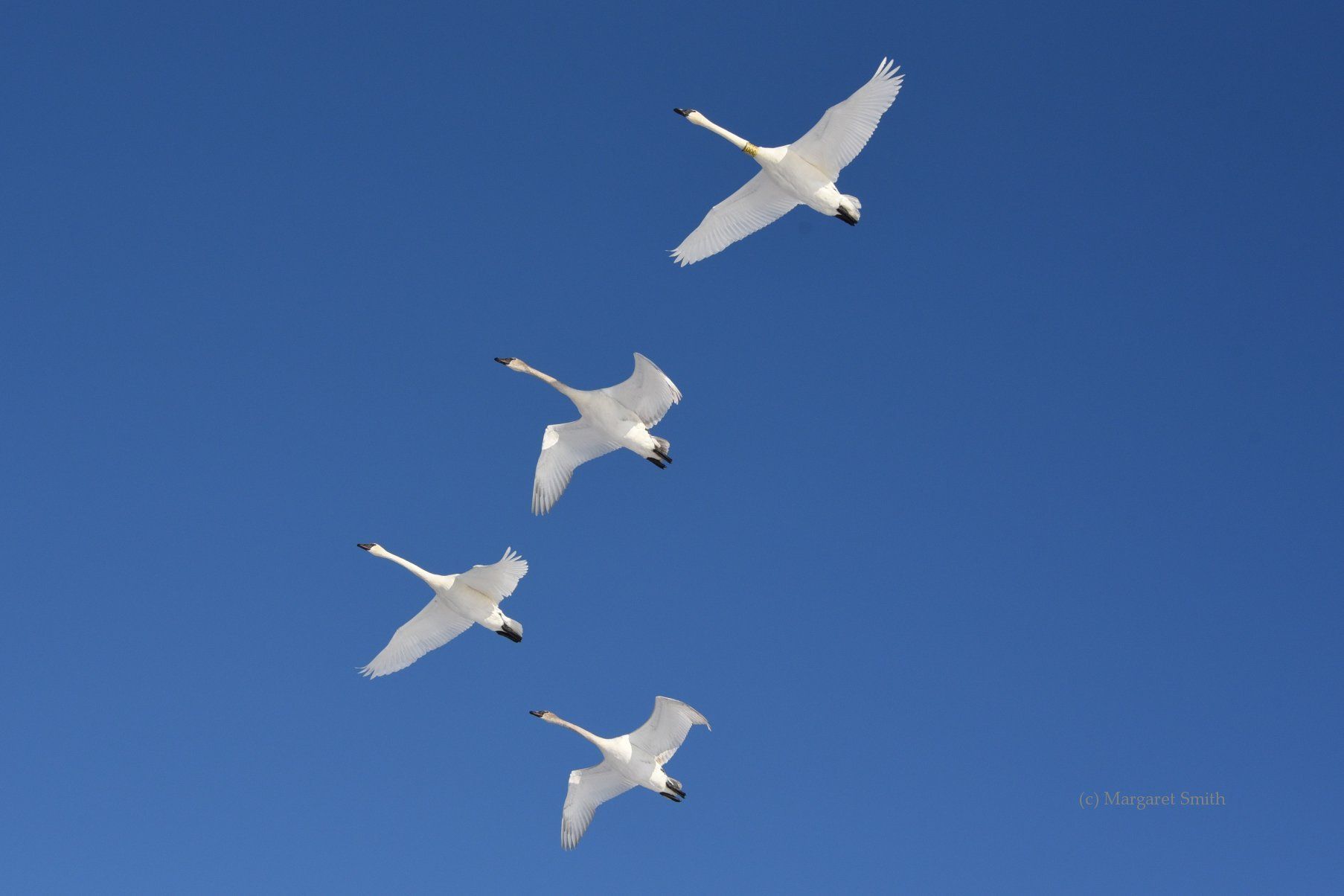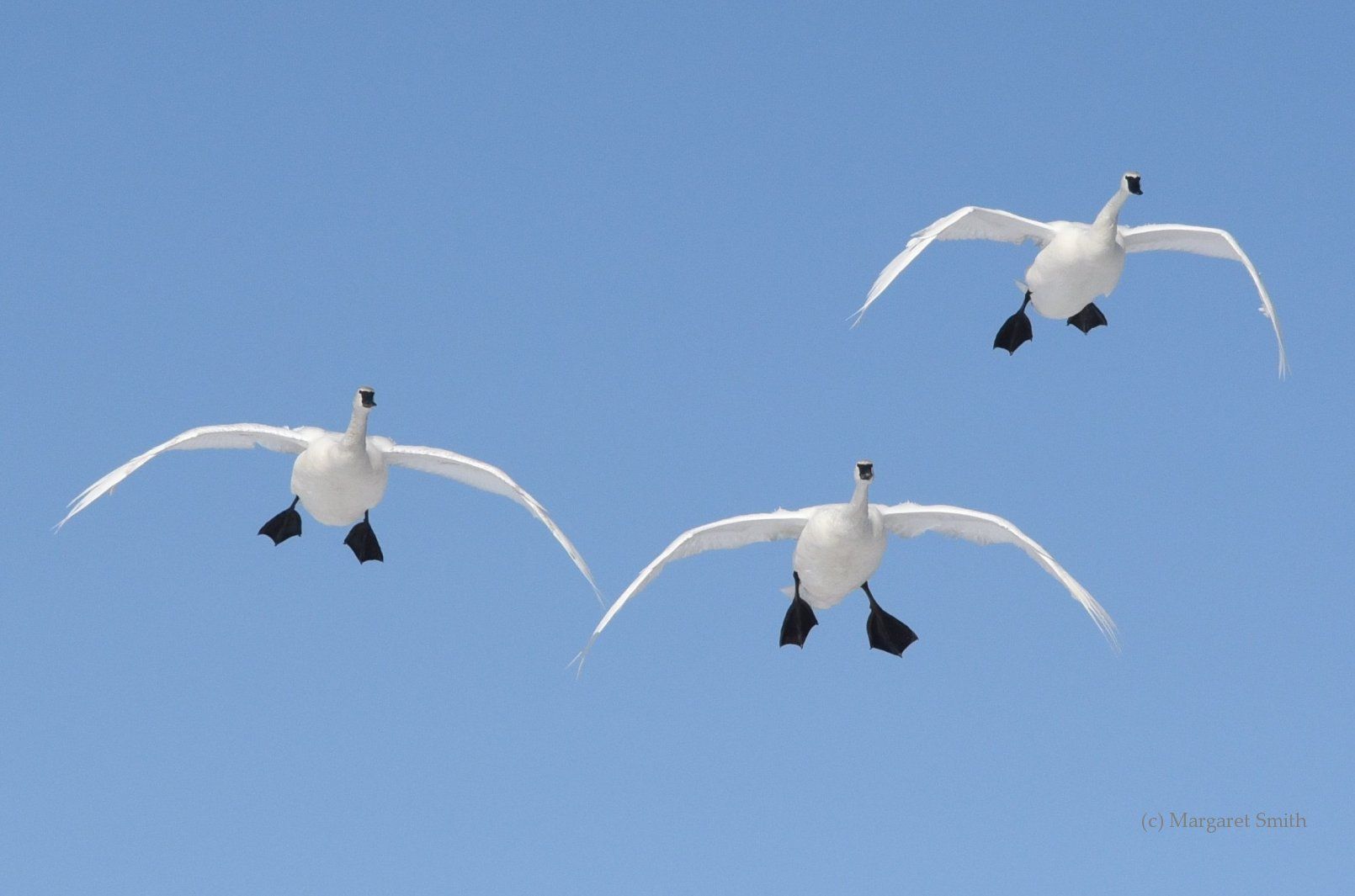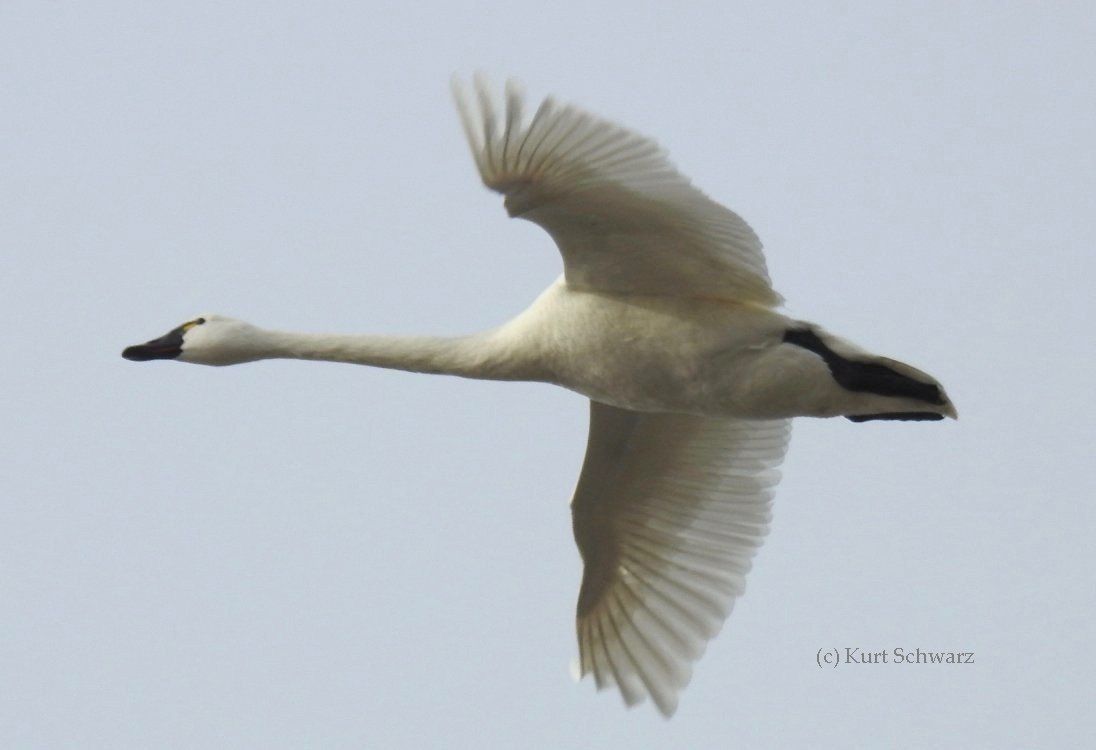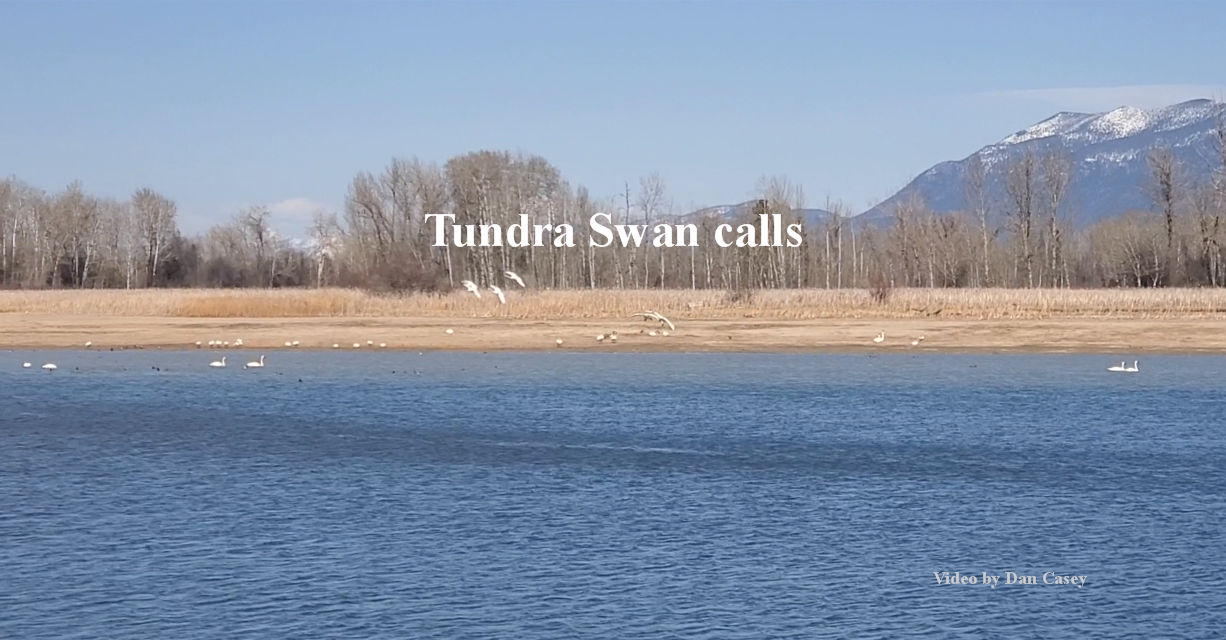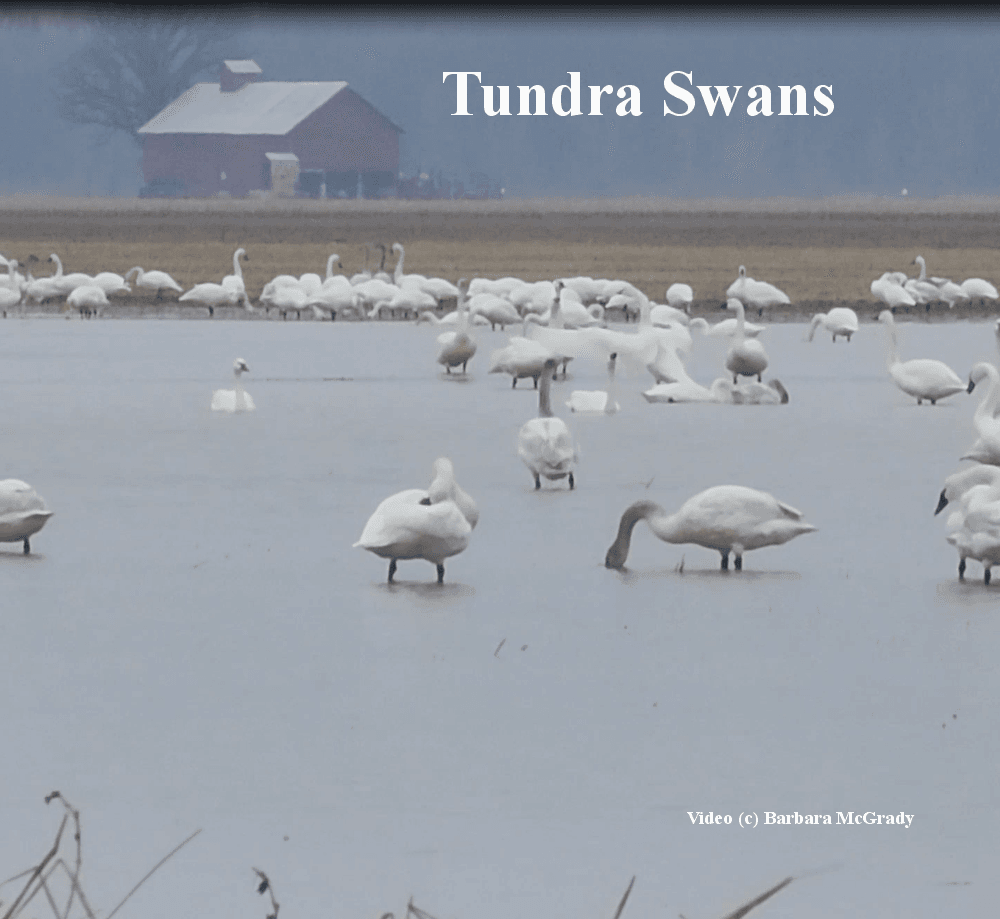Above: Neck positions in the take-off sequence of Trumpeter Swans. From left to right: the swan's head sinks into its chest and its neck forms a "C" [this is an unmistakable position for a takeoff]; the wings begin to rise at the swan's side and its neck remains compressed as the swan gathers its energy for takeoff; the swan's neck forms the "S" curve and its wings begin to lift; then the neck straightens like an arrow, the swan shoots forward and begins its running takeoff. Photograph by Margaret Smith
Flight Profiles and Take Off
It is thrilling to watch and hear Trumpeter Swans taking off! Their large feet plopping faster and faster as they gain speed is unmistakable and very dramatic.
Watch this video of a group of Trumpeter Swans taking off at sunset.
Do you live in an area where you see Trumpeter Swans and Tundra Swans together? Sometimes it can be difficult to tell them apart. Below are some helpful tips to look for using their flight and pre-flight behavior.
Takeoff characteristics: Trumpeter Swans vs Tundra Swans
Following their takeoff runs and just before they become airborne, Trumpeter Swans usually pull their necks into a shallow "S" curve (see photo in banner and explanation).
Tundra Swans generally hold their necks straight the entire time of the takeoff run and initial flight. This characteristic applies to both land and water takeoffs.
Watch this video of Tundra Swans taking off:
Trumpeter Swans may be the last birds in a mixed flock of Trumpeters and Tundras to take off. They may stay as long as one minute or more than the Tundra Swans. This happens when trumpeter swans and tundra swans occur together but are not entirely intermingled (trumpeter swans frequently remain at one end of the flock). This behavior is usually seen in smaller mixed flocks of less than 200 swans.
Preflight Communication
Trumpeter Swan

Photograph by Margaret Smith
Trumpeter Swans frequently bob their head and necks up and down (head bobbing). With this motion they also have a variety of vocalizations. ( Head bobbing is a common form of communication between individuals and within the group. For example, Trumpeter Swans head bob during pair bonding behavior; before and after territorial disputes; as communication within the swan family group to show interest in take-off; as greetings to Trumpeter Swans in flight overhead; or when meeting other groups or family members; as part of alarm communication, and other types of communication).
Head bobbing and vocalization activity intensify when the birds are disturbed and reaches maximum intensity just prior to the birds taking flight (note to photographers- look for the rapid increase in the rate and depth of head bobbing and vocalizations which occur just prior to take-off). This behavior may be brief or absent if the birds are suddenly startled and take flight.
Head Bobbing: This behavior is not particularly diagnostic but there are some differences in this behavior between trumpeter and tundra swan species. Both bob their heads as a way of communicating with their flock mates, particularly when they are about to take flight. Head bobbing in trumpeter swans is deeper, with their beaks often almost touching the base of their neck, while head bobbing in tundra swans is usually much shallower, more like a shallow bow to each other. In some displays, tundra swans vocalize, holding their necks at a 45 degree angle while slightly bobbing their heads.
Swan Videos
Tundra Swan
While vocalizing Tundra Swans may hold their head and neck out at a 45 degree angle.The behavior in the photo below is the “neck-stretching” display, in which Tundra Swans thrust their heads and necks forward, either to reinforce bonds with their mates or threaten other swans.
Head bobbing in trumpeter swans is deeper, with their beaks often almost touching the base of their neck, while head bobbing in tundra swans is usually much shallower, more like a shallow bow to each other. In some displays, tundra swans vocalize, holding their necks at a 45 degree angle while slightly bobbing their heads.
You can often tell the difference between the two swan species at a distance. Watch this video to learn more.
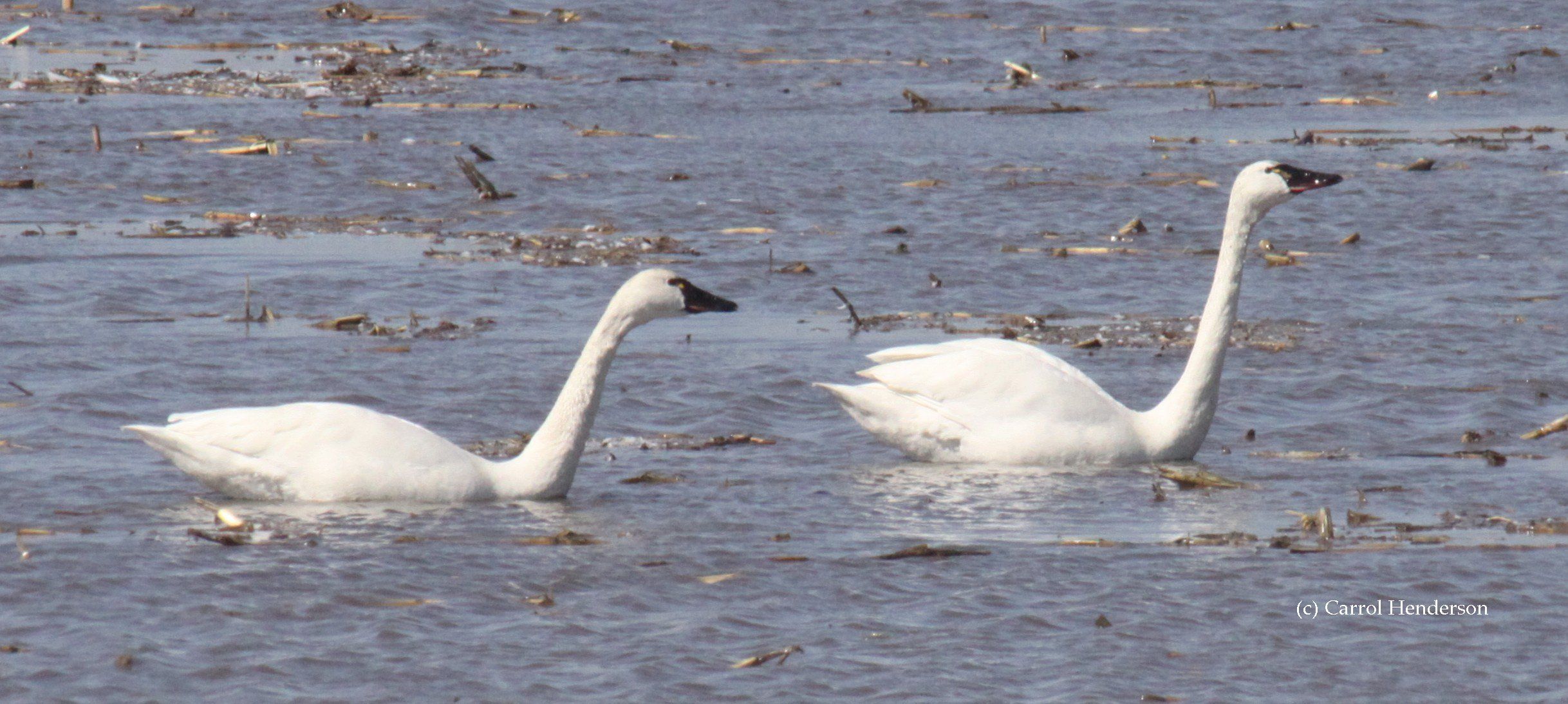
Photograph by Carrol Henderson. These two Tundra Swans show a 45 degree angle in their head and neck position.
Taking Flight
Trumpeter Swan
A Trumpeter Swan will pull its neck into a shallow "S" curve just a split second before beginning its takeoff run.
If you look carefully at the banner photo, you will see the neck positions in the take-off sequence. From left to right: the swan's head sinks into its chest and its neck forms a "C" [this is an unmistakable position for a takeoff]; the wings begin to rise at the swan's side and its neck remains compressed as the swan gathers its energy for takeoff; the swan's neck forms the "S" curve and its wings begin to lift; like a straight arrow, the swan shoots forward and begins its running takeoff.
IMPORTANT: Some Trumpeter Swans are marked with identifying neck bands. Please note the collar color and number or letters as well as date and location. Go to our Trumpeter Watch Report page to see how you can be part of tracking that particular swan's movement.
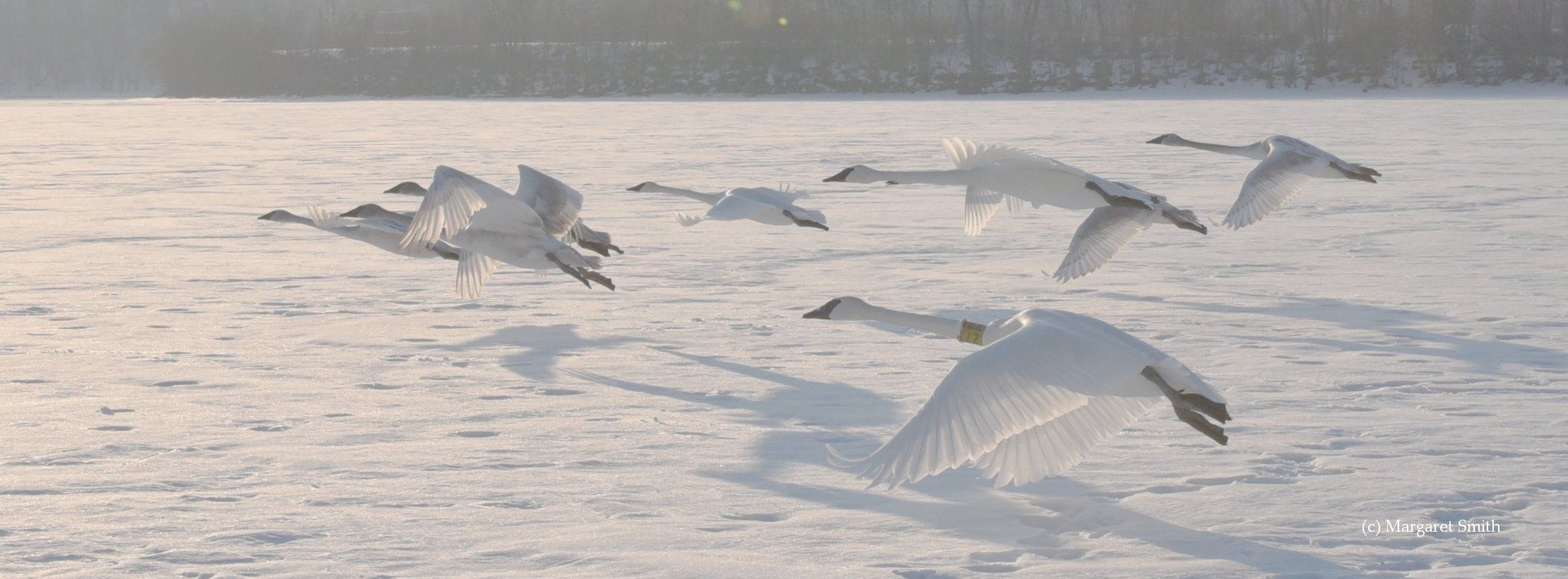
Photograph by Margaret Smith
Trumpeter Swans are large birds and need a lot of room for takeoff. They become airborne while close to the ground and it takes several seconds before they reach greater heights.
Tundra Swan
Tundra Swans hold their necks straight the entire time of the takeoff run and initial flight. This characteristic applies to both land and water takeoffs.
